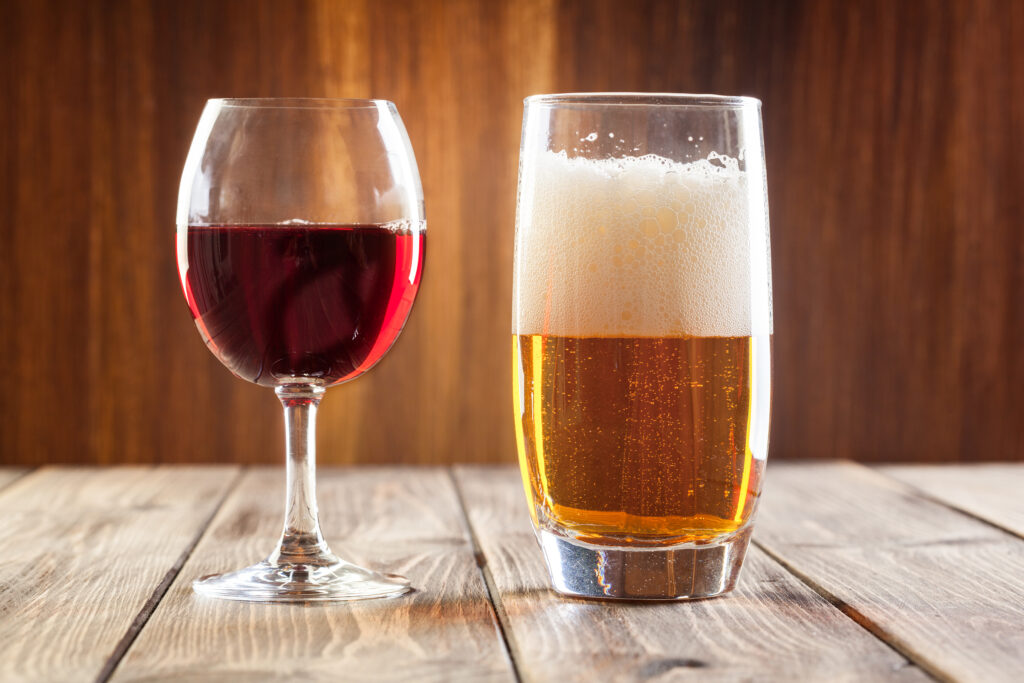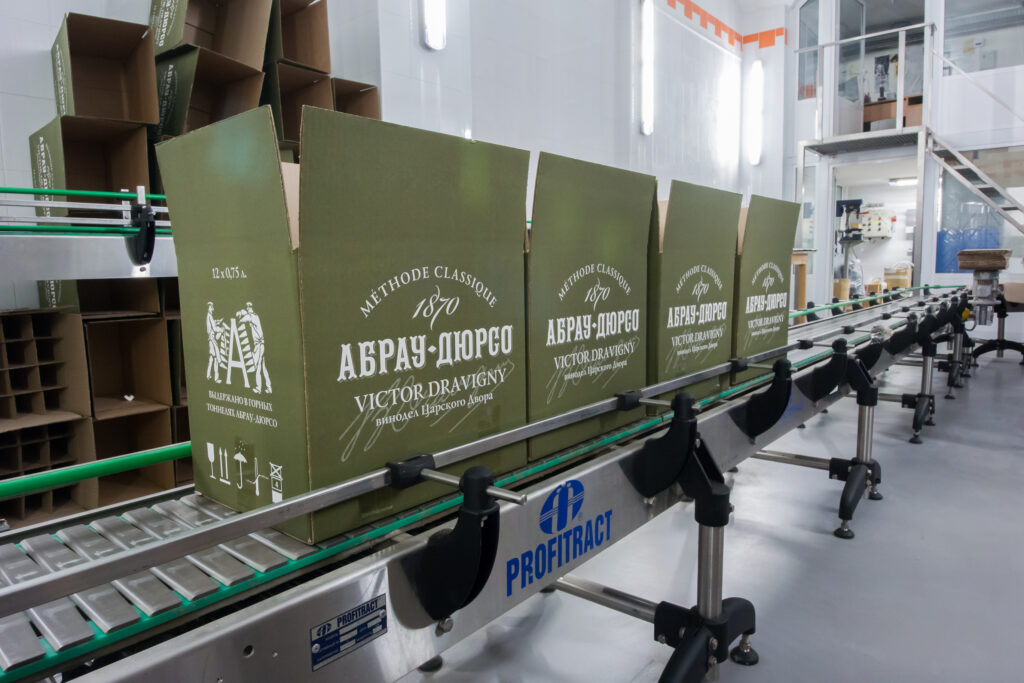
By: Alyssa L. Ochs
For hundreds of years, wineries got by with keeping track of their operations with little more than pen and paper. But in today’s competitive wine industry, getting by isn’t good enough, which is why an increasing number of wineries are relying on high-tech solutions that make running a wine business more productive and profitable. Fortunately, there are some excellent software companies that specialize in wine business software to address the common challenges that wineries face.
With a focus on inventory, fulfillment, compliance, and wine club memberships, here’s how an investment in software can assist modern wineries.
Inventory Software
Inventory management is a tedious job at a winery, which is why this type of software is in such high demand. Inventory software helps winery owners keep track of how many bottles of wine are available, understand the production history of the bottles, and ensure that each wine batch is traceable. This is a good type of software to invest in because it can ensure fewer counting errors and reduce the amount of time your staff has to spend manually keeping track of wine bottles that are produced, sold, and shipped.
Fulfillment Software
Order fulfillment can also be a challenge for wineries because it is a time-consuming and error-prone task. Fulfillment software winery can help winery staff create new orders, search past orders, view inventory details, facilitate returns, and be alerted about inventory shortages. Other fulfillment software features include the ability to view invoices, run reports, and get order status updates.
It’s important to choose fulfilment software that integrates easily with the current information you are working with and that can provide detailed reports about supply chain issues.
Compliance Software
Wineries must comply with many rules and regulations, which can be hard to keep track of and put you out of business if guidelines aren’t met. This is why compliance software is a popular choice among wineries to reduce business risks and keep up with important deadlines. Software companies offer solutions that help wineries follow the legal requirements of operating an alcohol-based business in a more accurate and precise way. This is particularly important when your winery begins to sell bottles to new markets outside your home region.
However, this type of software can be unnecessarily expensive if you have a very low production volume, and you’ll still need a staff member to manage the compliance software system in-house or on an outsource basis.
Wine Club Software
Wine clubs are great ways to retain loyal customers and stay connected with the wine-loving community. Good wine club software informs consumers how much they will save over time by becoming a member, makes it easy to buy bottles, and simplifies the process of running a wine club. With this type of investment, a winery can create shipments, print shipping labels, report on member statistics, customize shipments, and stay in touch with members more regularly.
Recommended Wine Software Companies
The wine industry is big business for software companies, but it is a smart idea to choose a company that has specific applications for wineries rather than more general applications that are broad enough for any type of company.
One company that specializes in the business side of wine is Microworks Technologies in Napa, California. Microworks provides direct consumer sales management software for the wine industry though tasting room, wine club, wine marketing, and winery accounting solutions.
Scott Meloney, the president and CEO of Microworks Technologies, told The Grapevine Magazine that one thing that sets his company apart from others in the industry is that when you call Microworks, you will reach a real human being.
“If you need technical support, we encourage you call us by phone, where you will speak to a live person and your question(s) will be answered to closure on the first call 99% of the time,” Meloney said. “Our staff is made up of industry veterans who understand the wineries business and will relate to your questions.”
Meanwhile, VinNOW LLC is a winery software company that provides customer, wine club, and sales and inventory management all under one roof. This Mesa, Arizona-based company also offers free training and support, extensive reporting real-time wine club management, point of sale, and QuickBooks integration.
Ted Starr, the CEO of VinNOW LLC, said that what sets his company apart is VinNOW’s extremely reliable customer service.
“This ranges from customer support when the wineries need it, seven days a week, to the ability to support wineries who can’t rely on their internet connection.”
Another company that provides a comprehensive software package that integrates numerous aspects of winemaking is The Winemaker’s Database. This Los Gatos, California company has been in the industry since 1983 and assists wineries with everything from tank transactions to barrel tracking, analytical data, customizable reports, 702 generation, and more.
The Winemaker’s Database’s Vice President, Emily Vahl, told us how her company was originally created by a winemaker and how it still offers winery solutions from a winemaker’s perspective, rather than that of a company or programming team with no winemaking experience.
“Also, our entire support team consists of former winemakers or winery employees that have worked hands-on with crafting wine,” Vahl added. “When our customers call WMDB, they speak with people who understand their specific needs.”
Considerations and Important Software for Wineries
There are many considerations to take into account before investing in a new winery software system, and you may want to talk to other wineries in your region about what they use and what works well for them before making any decisions. Compare costs for similar types of software and think about whether you only need a single-service type of software or would benefit more from a comprehensive software program that addresses multiple needs.
Other considerations include how customizable software is for your winery’s specific needs, the data setup process, and how you will transition from your current system to a new one. You might also think about the ability to use software through a mobile app, how easy to navigate the web interfaces are, and how secure the site is for cloud computing technology and data center privacy. Customer technical support for software purchases and access to future software updates as technology improves are also important considerations.
When asked about the most crucial products that are must-haves for a modern winery, Meloney of Microworks Technologies said, “At the very least, a winery will need a good CRM package with POS, club, ecommerce, inventory, and accounting software so it can leverage sales efficiently with the right tools to promote, track, and measure business goals.”
Starr of VinNOW pointed out that crucial software needs vary with each winery because some only sell wine online, while others sell through retail, clubs, have tasting rooms, or incorporate a combination of these sales channels.
But overall, for software or hardware, POS, club, cart, compliance, accounting, communications, and other products, Starr said that wineries “need products that work the way the winery wants to run their business, which are affordable and supported with great service and have the ability to grow with the business as the business grows and changes.”
Vahl of The Winemaker’s Database said that the most important type of software for a winery to have is anything that can help it reduce paperwork and be efficient and organized.
“Winemaking is an art form, but it is also a craft, meaning the end product needs to be consistent each time,” Vahl said. “Software is an excellent tool because you can click a few buttons and gather the data instantly to view the numerous components of a blend. Plus, since nobody enjoys paperwork, so it’s pretty handy to let your computer do the leg-work when it comes to providing the required reports to the government.”
How to Avoid Common Software Mistakes
Meloney from Microworks Technologies said that many businesses make the mistake of not taking the time to learn the full capabilities of their software. This means that you might be missing out on important efficiencies that the software has to offer. Another common mistake he noted was inadequate hardware.
“Can you image pulling a boat up a hill using a bicycle?” Meloney asked. “Recognizing the impact of outdated computer equipment on the performance and reliability of software can be the difference between success and failure of a software system.”
To avoid future regrets, Starr of VinNOW emphasized the need for wineries to call multiple references with similar business demands and review the hidden costs and expenses of possible solutions.
“Ask references about the surprises and difficulties they uncovered during the installation and first six months of using the solutions,” Starr advises. “Also, ask references about any shortcomings and strengths of features and service.”
Vahl of The Winemaker’s Database said that a common mistake is looking for an entire software package from just one provider. For example, her company has specialized in wine production software for over 35 years and that is its primary area of expertise.
“Often, wineries approach us looking for a software package from a single company that can do everything from vineyard management to POS,” Vahl explained. The areas of vineyard management, wine production, warehousing, accounting, point of sales, and wine club are vastly different from one another, which is why I am a fan of software interfaces. When companies work together to create interfaces, then they can offer some pretty amazing options to clients because they are each doing what they do best.”
Software Advice for Wineries
Modern wineries rely on software for accuracy, efficiency, and to be competitive, but a software decision could either help or hurt your business. Therefore, it is advisable to talk to a few software companies to get a sense of how their products can work with your current operations.
Meloney from Microworks Technologies advises wineries to know their business needs, be thorough, and check with as many references as possible before implementing new software for their operations.
“You don’t want to favor one department in the decision when it may cripple another,” Meloney said. “Make sure you are provided an in-depth demo of the features in detail. Know that what you see on the surface does not represent the software’s capabilities. Ask references about the vendor, not just the software, because the quality of your vendor is just as important as the software itself.”
Starr of VinNOW’s main pieces of advice are to review your winery’s goals, assess the strengths and weaknesses of your team and location, and know what questions you need to ask software companies. He also recommends making sure a company has the features you need and to remained focused.
“It is so easy to get distracted with features like customer photos in your POS and club, but since most of us don’t have facial recognition features, we end up finding out that a customer is a club member when we speak with them,” Starr said. “And every customer should get excellent customer service, so the feature sounds great but is not highly used.”
“Then have a hands-on test-drive of the software,” Starr recommended. “If you plan to keep the solution for three to five years, dedicate a few hours per solution to truly see the depth of the solution and avoid picking the wrong solutions. Try adding a sale, changing the order mid-stream, cancelling an order, processing a club release, and managing returned packages and cancelled orders. Take the time to access reports that you need. Some solutions are strong in reporting but need a rocket scientist to use them. Ask how they meet ADA and PCI compliance and how they deal with D2C compliance and all the new tax reporting requirement and permits that are required.”
Finally, Vahl of The Winemaker’s Database advises wineries to start small and not try to resolve all of your issues right away because this is a common way that wineries end up paying too much for way more software than they really need.
“I always recommend starting with the simplest form of the program and then adding on components as they are required, when users become accustomed to how the software works,” Vahl said. “Modular-based solutions are excellent for keeping costs down and also for helping wineries create a tailored solution for their operations.”









